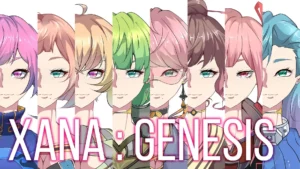Virtual avatars will walk the runways, wearing virtual shoppable clothes. Brands are making the metaverse their next stop, and here’s why.
Traditional fashion weeks will lose their charm as fashion in Metaverse shows take over. A great example of this was one of XANA’s Metaverse Avatars that got featured in Milan Fashion Week. It was the first time a Metaverse Avatar ever got featured on Milan Fashion Week. Brands have been moving to online fashion shows ever since the pandemic started and have kept thinking of more ways to connect to their customers in the digital realm. A major virtual world has already sold Hiroko Koshino’s wearable NFTs that XANA’s Metaverse avatars could wear with immediate effects.
Such announcements from major virtual worlds keep coming as major fashion brands are rushing into the Metaverse. In simple words, a Metaverse is a digital world where users can interact with each other through a combination of advanced technologies, including augmented reality, virtual reality, and blockchain technology.
Squarespace, a website-building and e-commerce platform, released a report last summer in which 2,000 U.S. consumers were surveyed. Around 60% of the participants believed that how you present yourself online is more important than how you present yourself in person. Earlier, it applied to social media, but now the same sentiments will translate in the Metaverse.
The fashion industry realizes the potential of the Metaverse and is rushing into it for the following reasons: earning a new stream of revenue, attracting new customers, and scalable products.

1. Revenue Stream For Fashion Brands
Fashion in the Metaverse is a highly lucrative new stream of revenue. According to predictions, the Metaverse can help luxury fashion brands in expanding their revenue by over 10% by 2030, which amounts to $50 billion in additional business for the fashion industry. In addition to launching their physical collections, brands will now also be working on Wearable digital assets for Metaverse Avatars.
These digital avatar costumes will be represented on blockchains like the XANA blockchain by NFTs. Thus people will be able to buy and sell these digital wearable assets on NFT Marketplaces. If the NFT marketplace is integrated into the Metaverse, users can easily port their NFTs onto the Metaverse and equip them as wearables. These Wearable digital assets will allow your Metaverse Avatar/character (3D humanoid model) to have a unique look that will stand out in the virtual world.
2. Attracting the Next Generation of Customers
Stepping into the Metaverse is another way to grab the attention of Gen Z, who are digital natives and accustomed to spending plenty of hours on the web. Their digital lives are as important to them as their physical lives, and rightly so because the web can provide them with numerous opportunities to earn as well as play.
Brands know that they need to be present online to attract this target audience. On the Metaverse, we will soon be able to participate in social media, esports events, and gaming. The Metaverse is not just going to be another application on the internet, it will become the next iteration of the web. Fashion brands and all other companies would want to be here because their entire consumer base will be on the Metaverse.
3. Infinitely Scalable Products
Digital fashion items in Metaverse are extremely scalable because there is no need to buy raw materials, pay for operational costs to produce clothing lines, or bear any transportation costs. Brands already have vast archives of collections, and they can pull any design from there and repurpose it into a wearable digital asset for the Metaverse. These digital avatar costumes can be sold as NFTs for as long as there is a demand for them at no additional cost because they don’t need to be manufactured.
The Metaverse allows brands to offer sizable volumes of branded goods and do so without having to worry about inventory plans or manufacturing schedules. To put it in simple words, most, if not all, limitations placed on brands in the physical world may not exist in the virtual space.
4. An Environment-Friendly Industry
Gen Zers (Generation Z) are becoming conscious of the environment. The traceability inheritance in virtual digital assets enables fashion brands to deliver environment-friendly costumes to their conscious customers. NFTs are an accessible way for brands to show customers that they are working towards sustainable goals and practices. More importantly, consumers can verify whether a product is truly sustainable by verifying the authenticity and provenance of NFTs on the blockchain.
5. A Personalized Touch
Designers and Fashion Brands in the Metaverse will be able to connect seamlessly with their customers by providing more personalized and immersive experiences. Digital natives, millennials, and Gen Z customers love partnering with brands that offer unique experiences. The Metaverse world of NFTs and Web 3.0 enables fashion brands to sell their products in a reasonable and creative way as they don’t have to worry about physical stores or shipping physical inventory. Now Fashion brands can offer their customers a truly unique shopping and entertainment experience.
NFT-driven virtual worlds allow brands and designers to individually offer personalized experiences and special editions. Well-known fashion brands can offer custom-made clothing to their customers, while smaller brands and designers will continue to stand out by offering limited edition designs. The Metaverse, through NFTs, will continue shifting the fashion industry towards the “experience economy” based on core value propositions based on delivering experiences to customers rather than physical products.
The Bottom Line
More brands will come to the Metaverse because of user-centric policies as defined by XANA. All this could also open up the industry to lesser-known designers of different backgrounds. For instance, XANA lets anyone, brands, and regular folk create their wearable digital assets and sell them as NFTs on the Metaverse. A lot is happening in the digital fashion arena, and there are still more.














